Kazbegi
After lunch we headed North on the Georgian Military Road.
The road was built by the Russians in the 19th century to enable
them to get their troops to Georgia to make it easier to maintain
control. Now it is the only border crossing between Russia
and Georgia and also Armenia's only international vehicle access
point (because of their poor relations with Turkey and
Azerbajain).
First stop was the Ananuri fortress, a 17th century complex
overlooking the Aragvi River and reservoir way below. It was
the scene of many fierce battles and includes defensive walls,
remnants of a castle and a church.
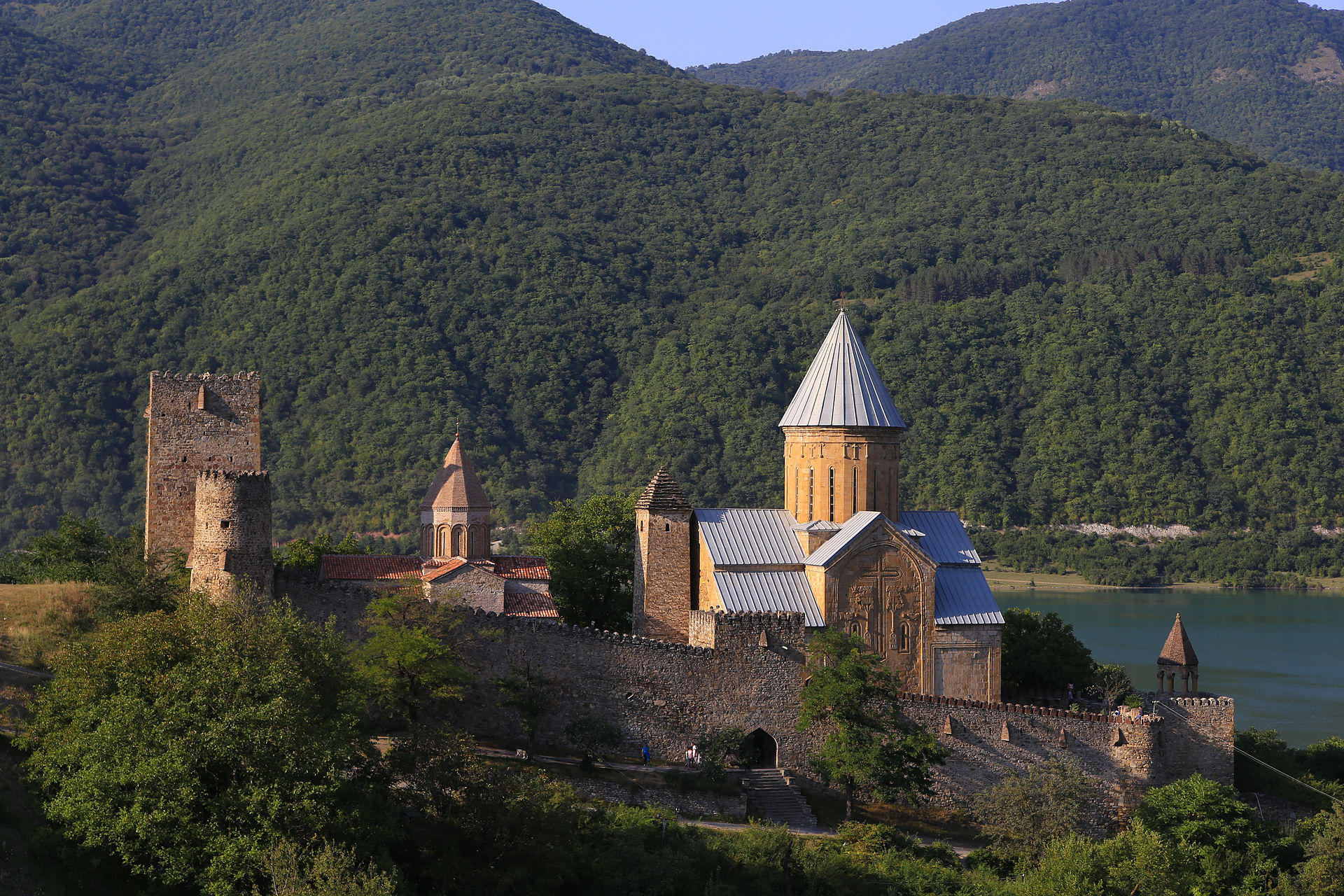
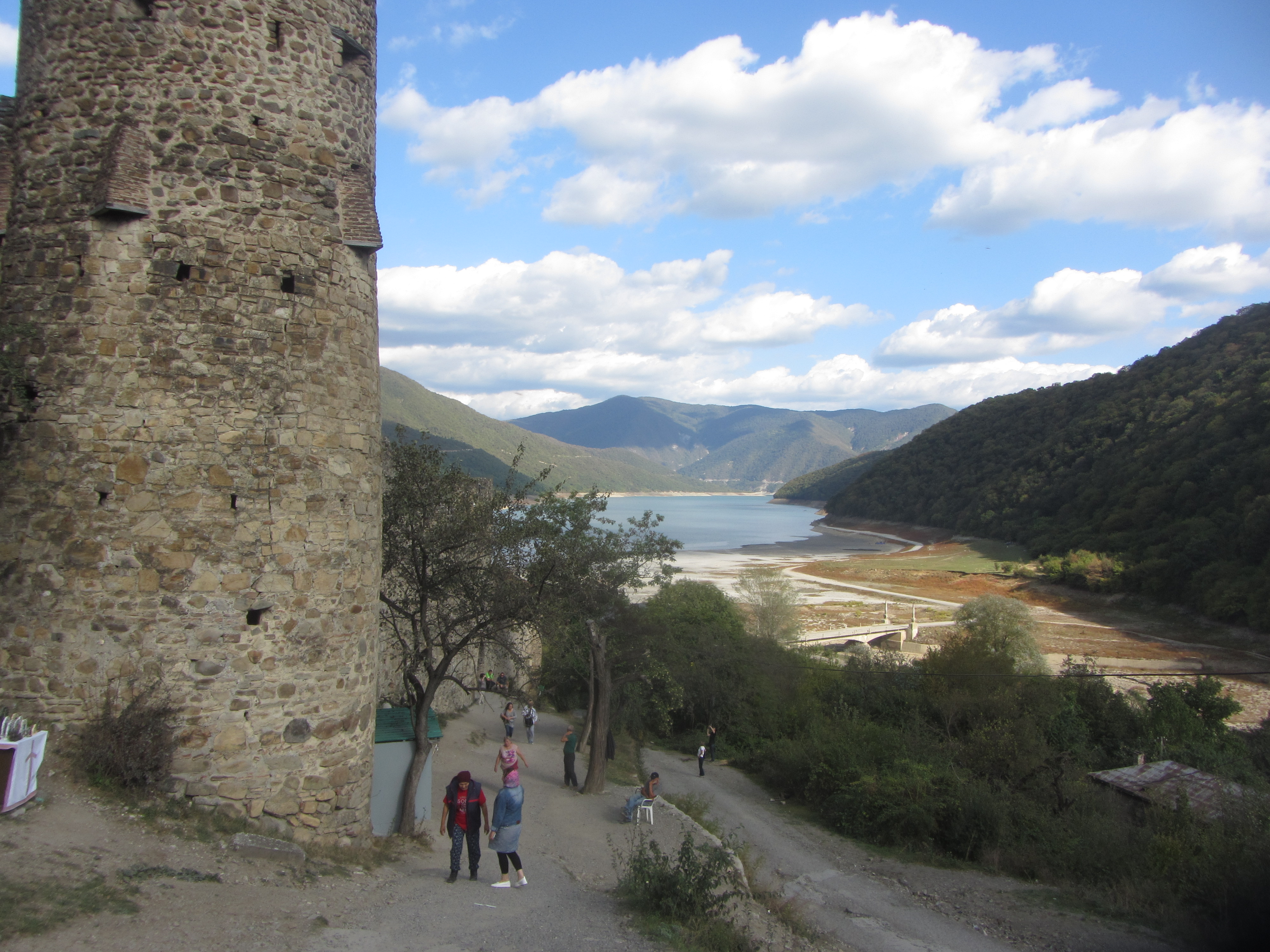 \
\
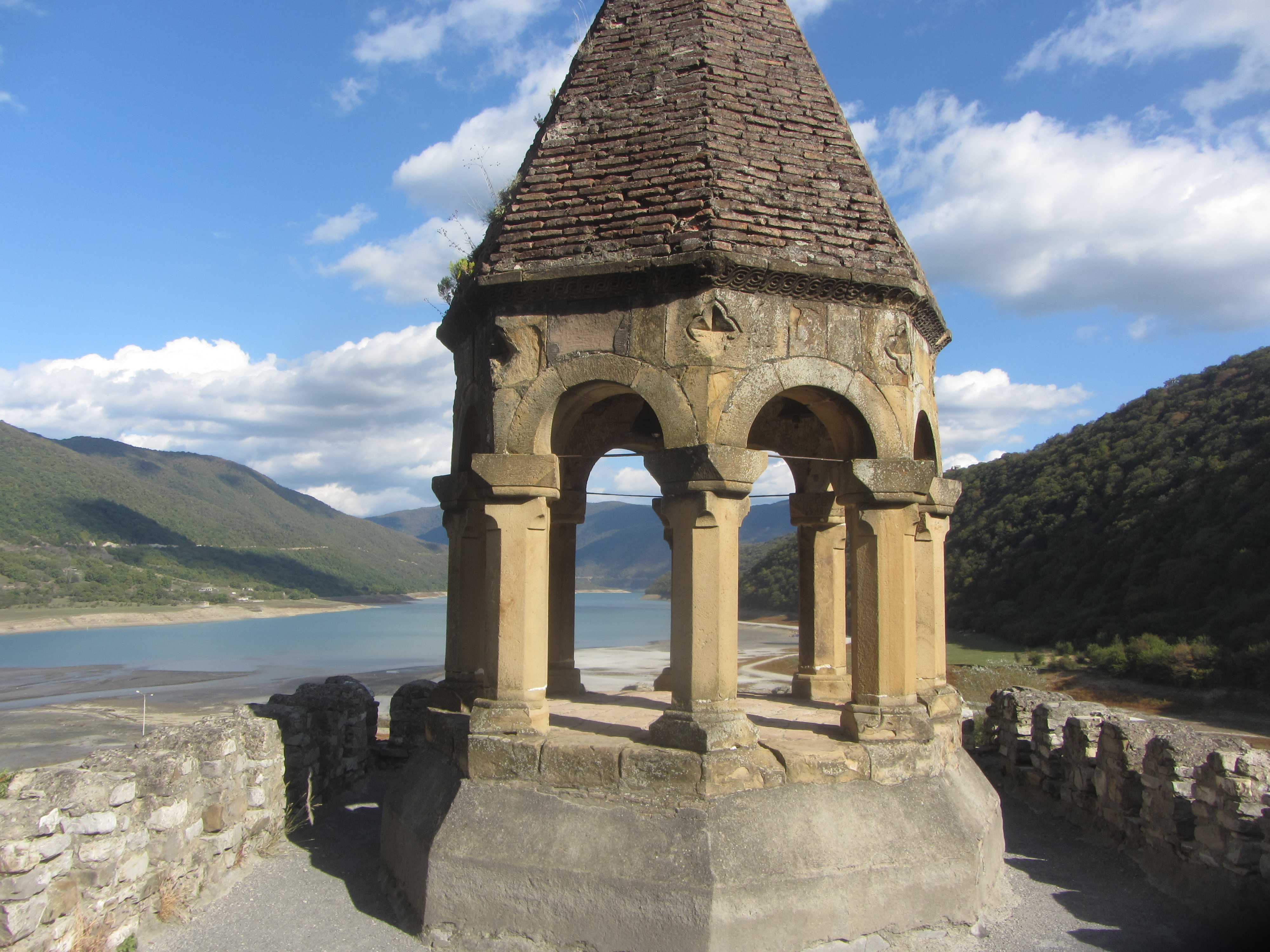
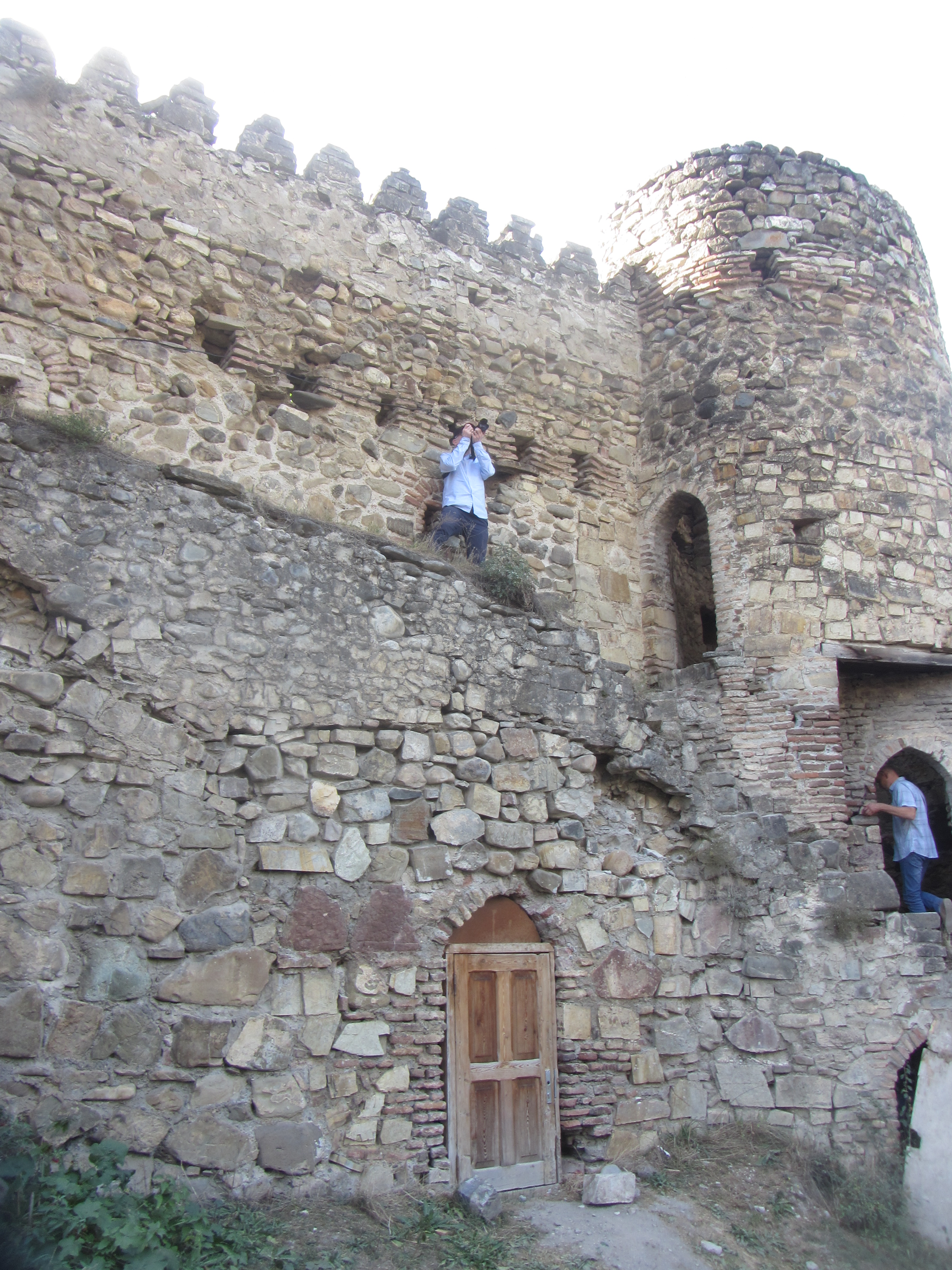
Often we were delayed as cows or sheep blocked the road.
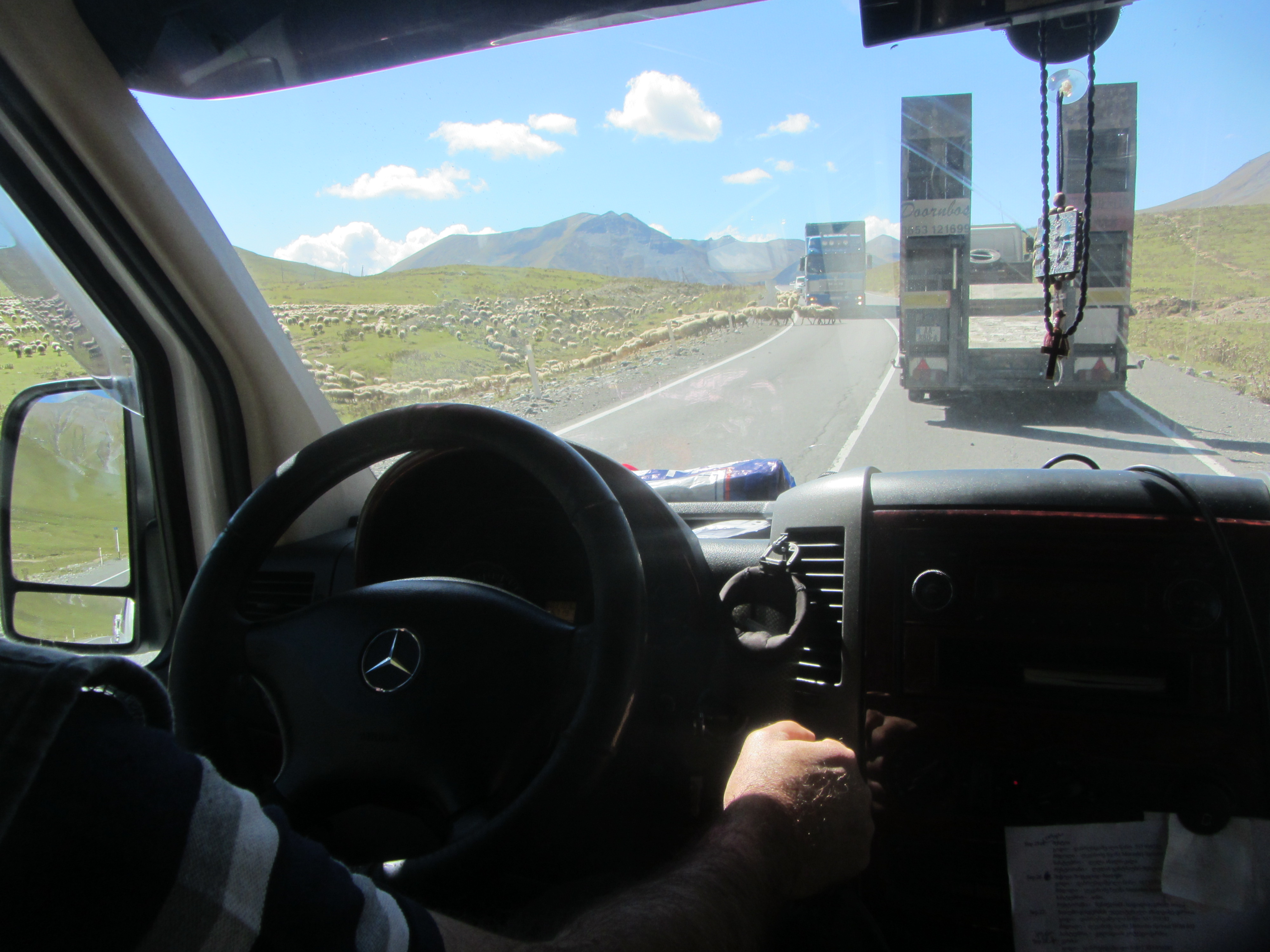
We passed Gudauri, the ski area I had visited many weekends 20 years
ago. Now the area has dozens of small hotels and guest houses
as it has become popular among Russians because of its high
elevation, long winters, steep slopes and low prices compared with
Austria and Switzerland. Some pictures from 20 years ago are
here: click
here
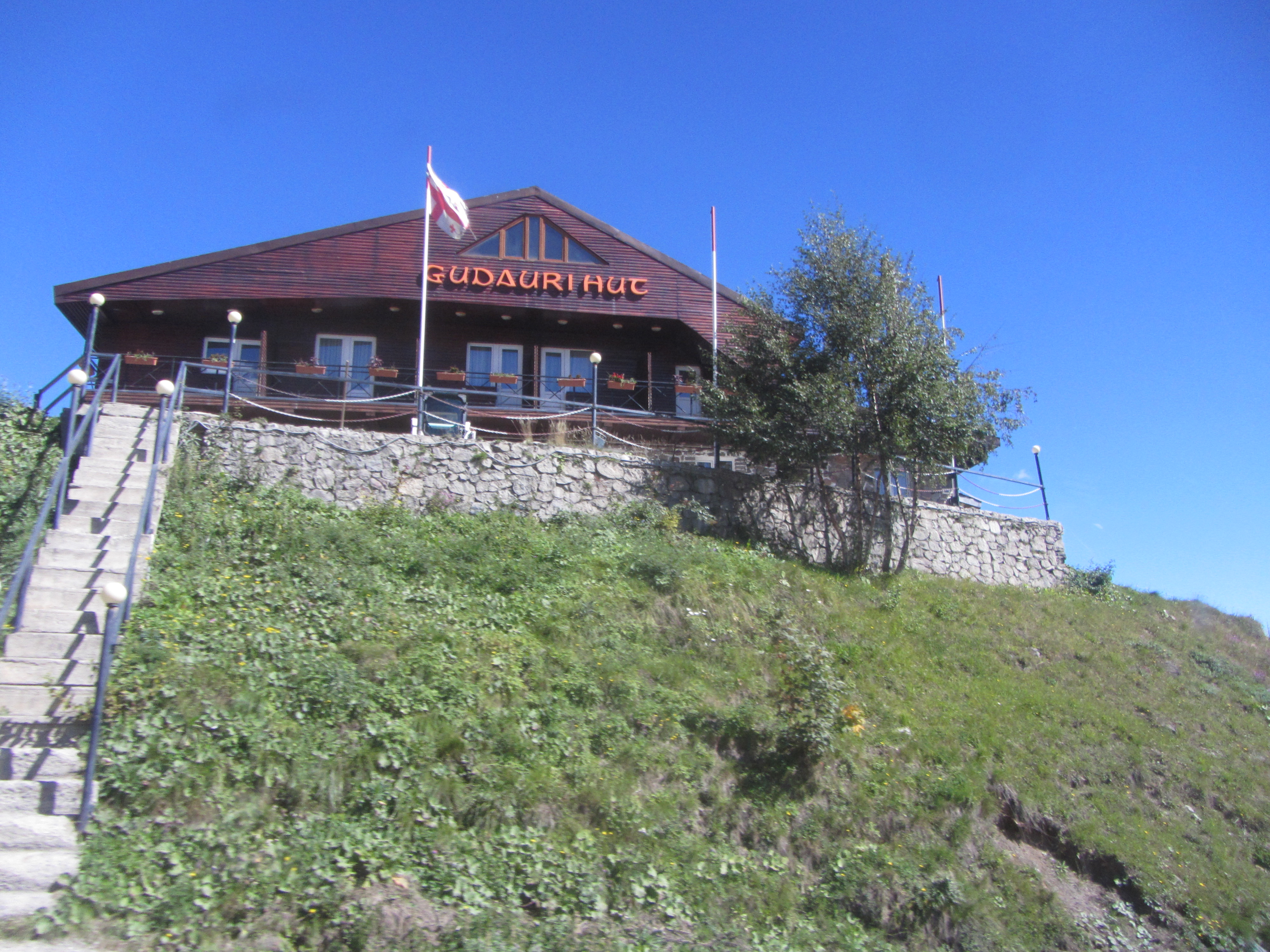
Near the top of the pass is a monument erected near the end of the
Soviet times as a tribute to friendship between Georgia and Russia.
Its mural showed pictures of Russians and Georgians celebrating
their cultures.
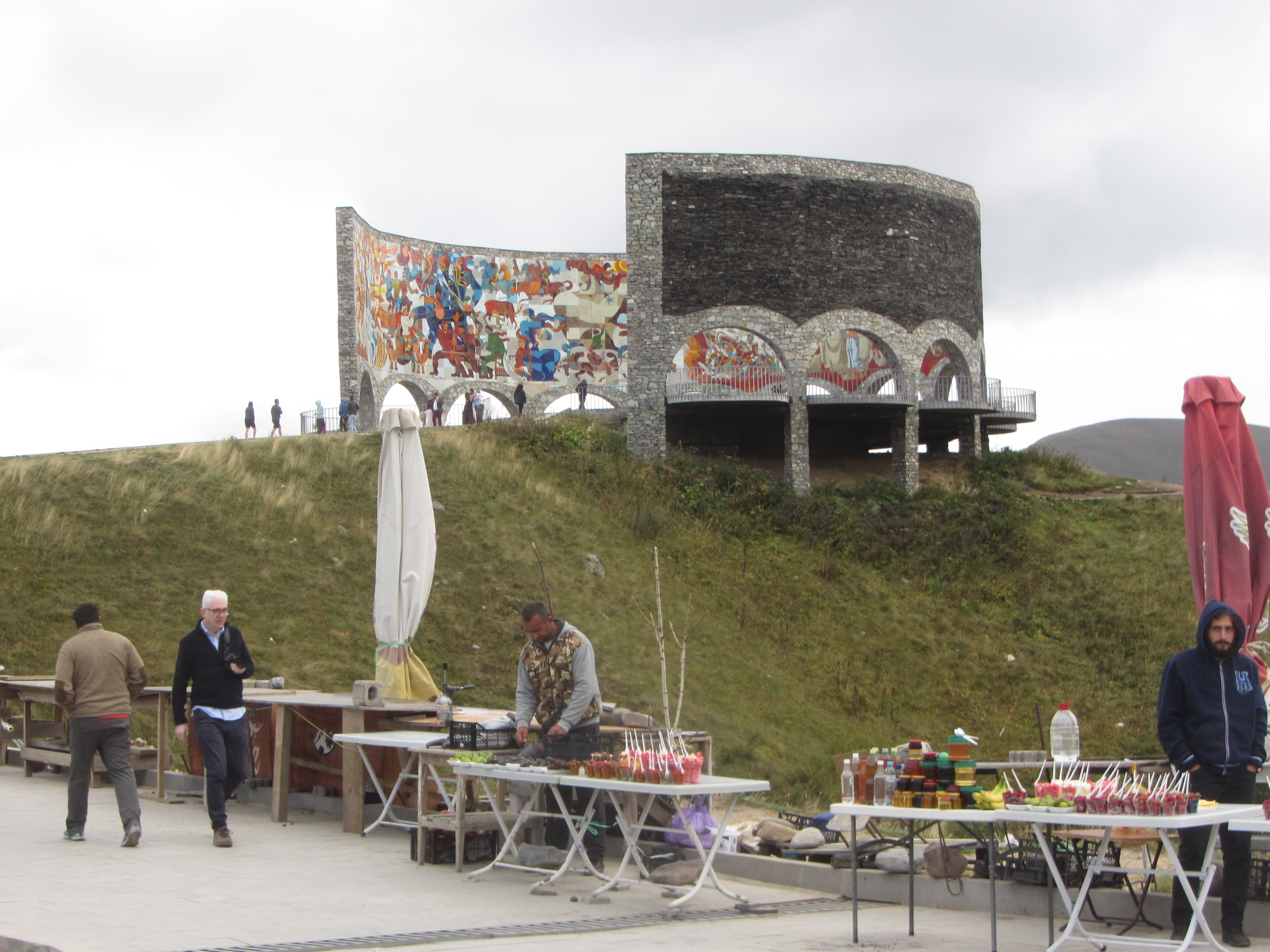
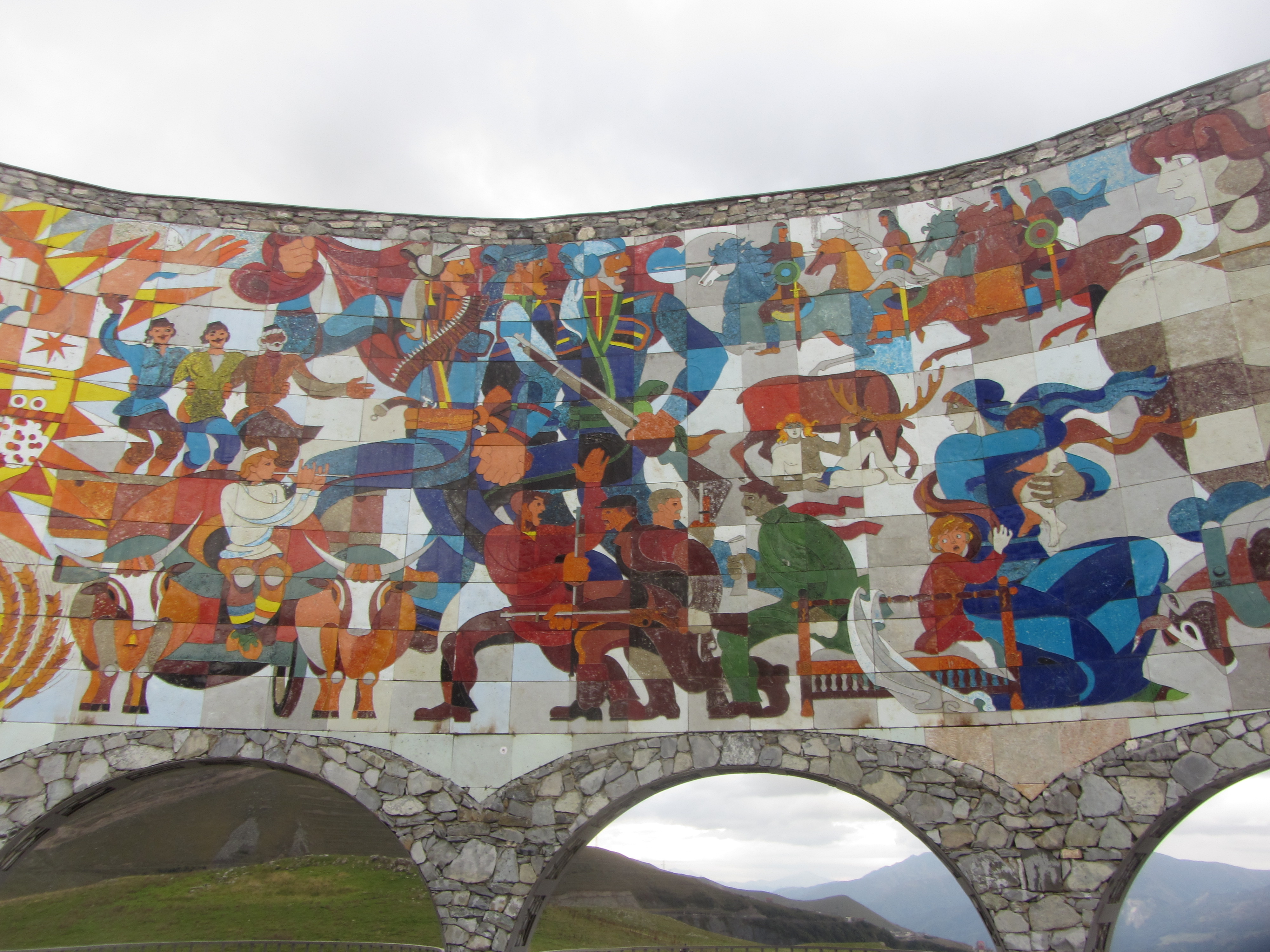
It was a long way down to the valley below.
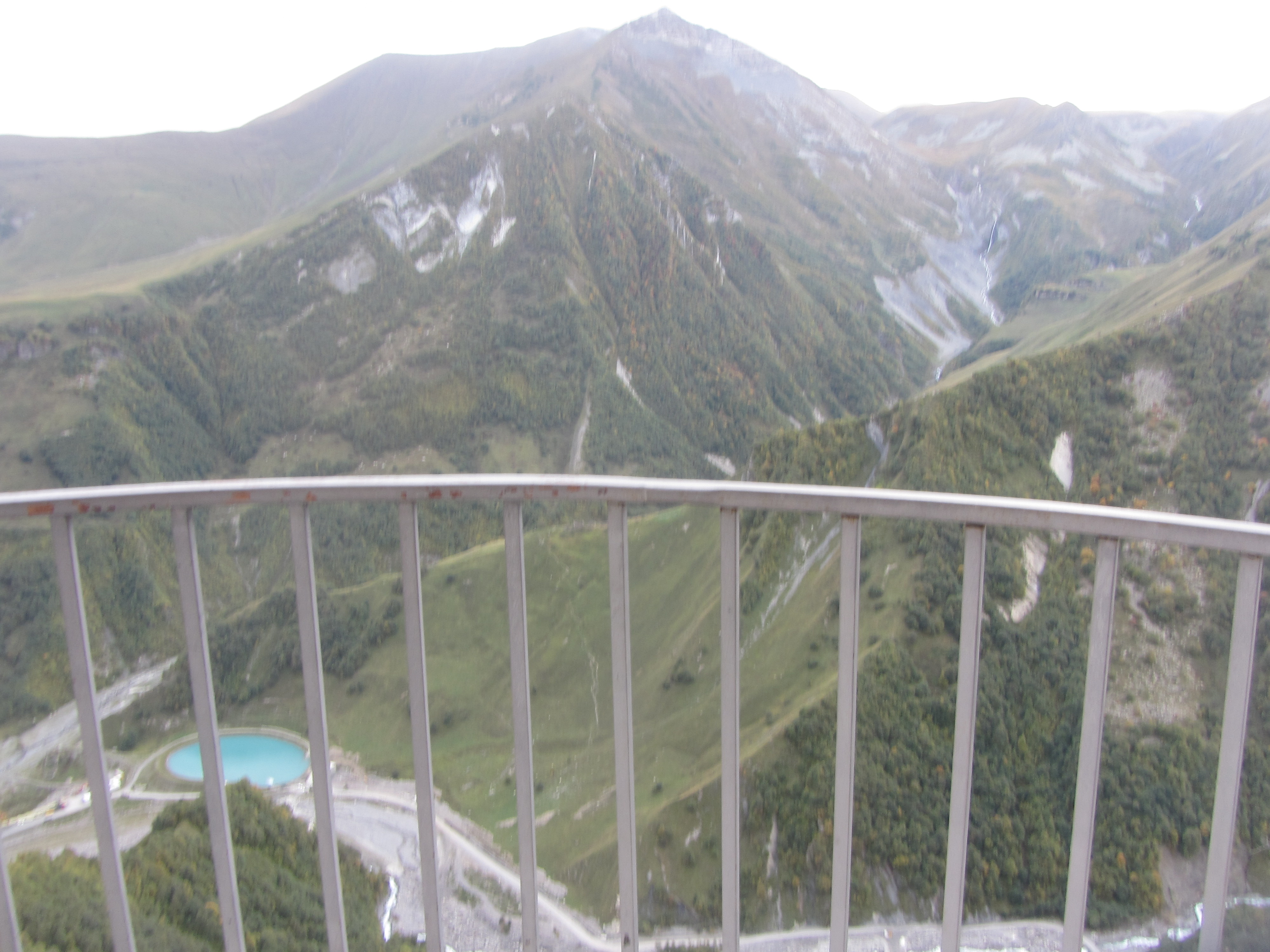
Our guide thought this may not have been a real wedding celebration
but rather filming of an advertisement. We had seen the same
people at Ananuri.
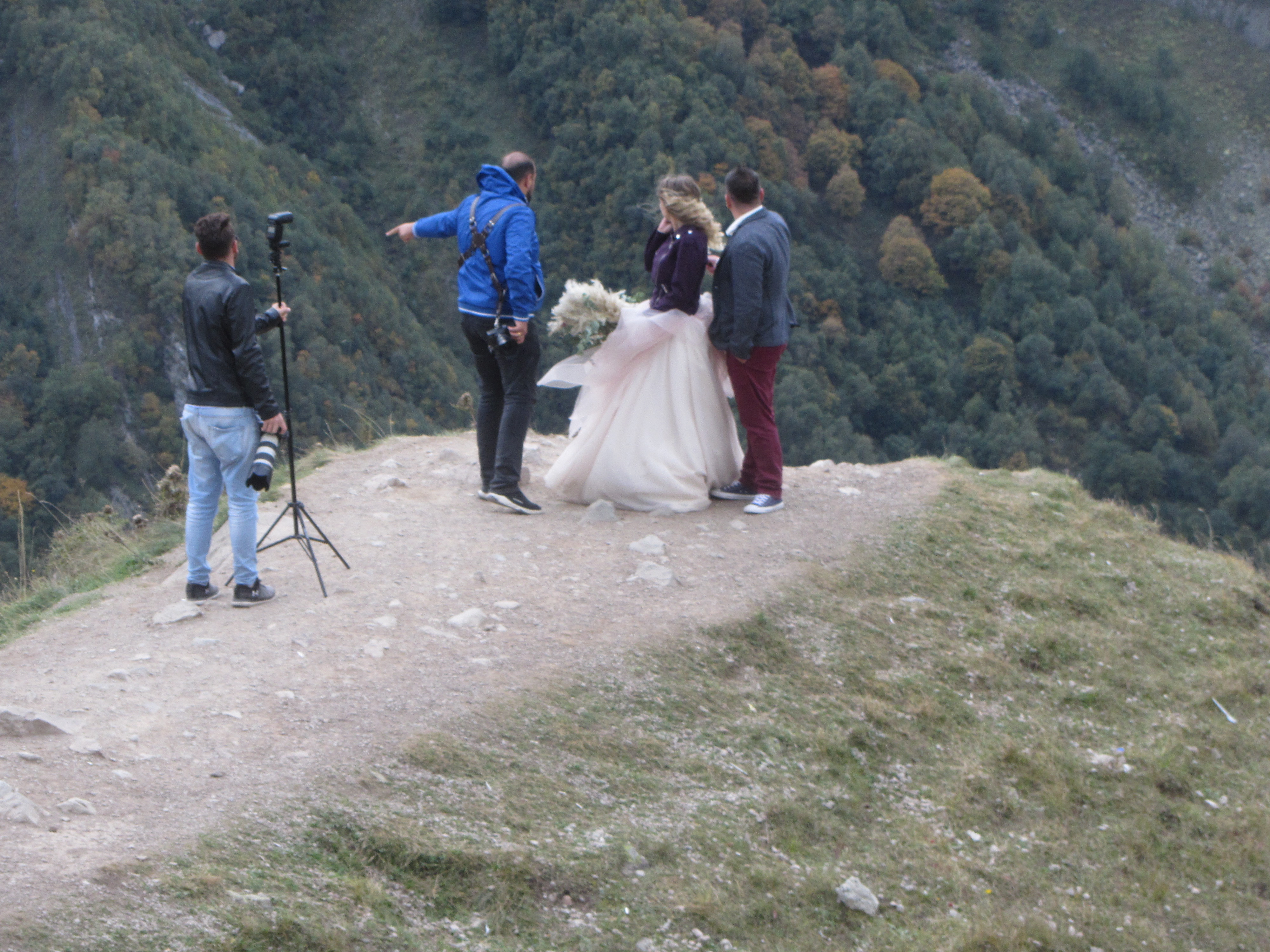
We stayed in a hotel not far from the Russian border. In the
morning we set off hiking up the mountain to the Tsminda Sameba
(Gergeti Trinity Church)
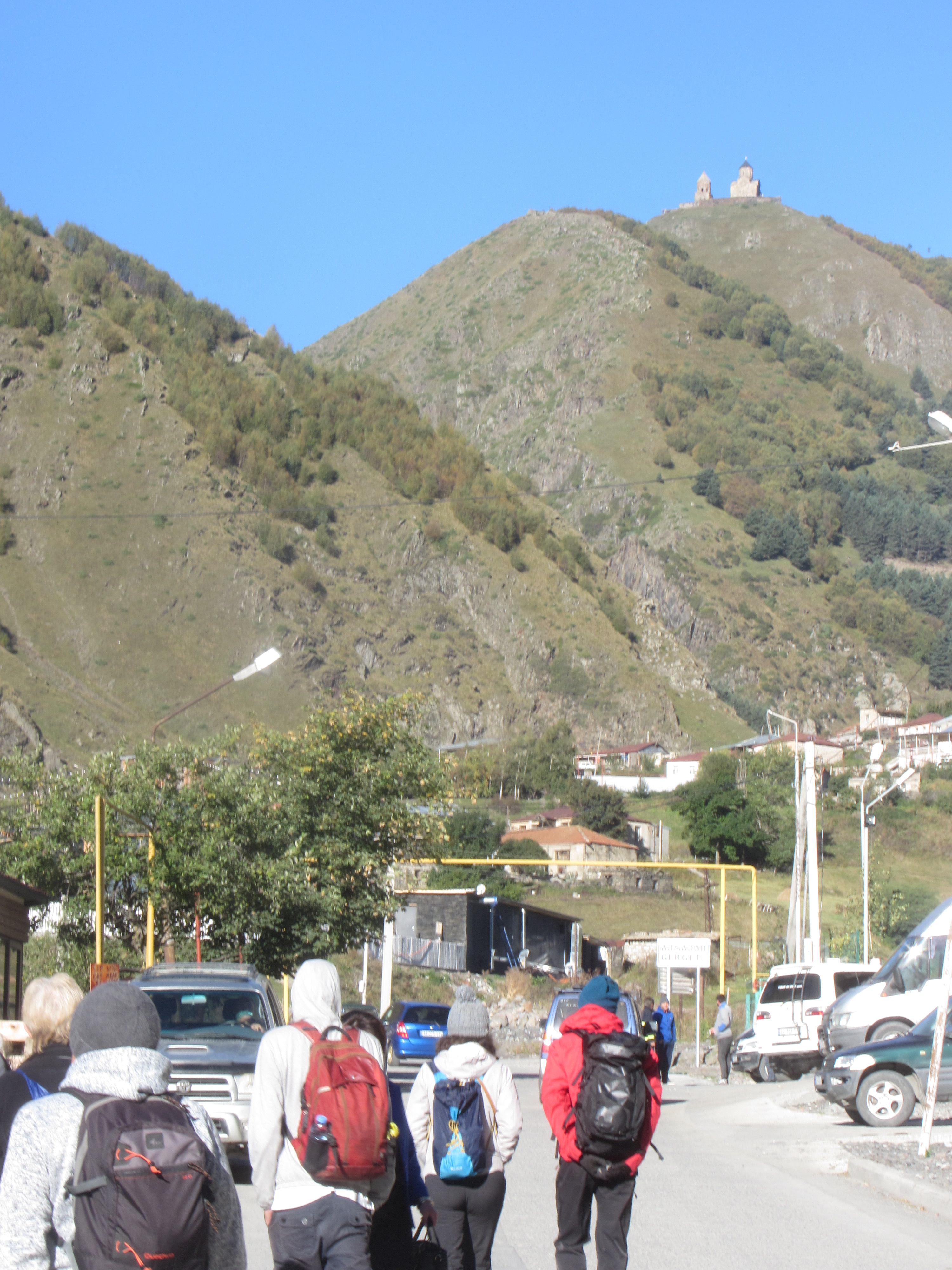
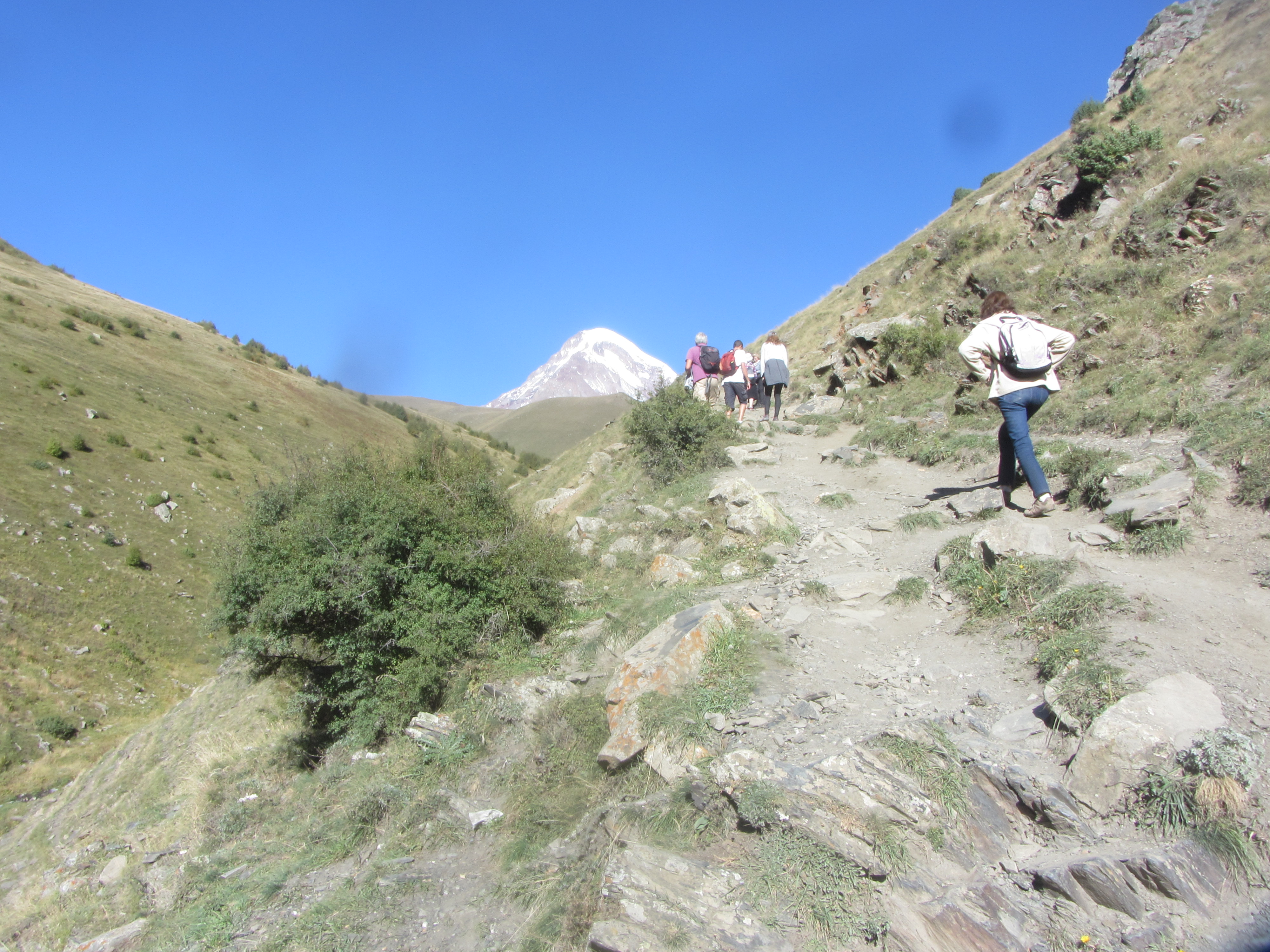
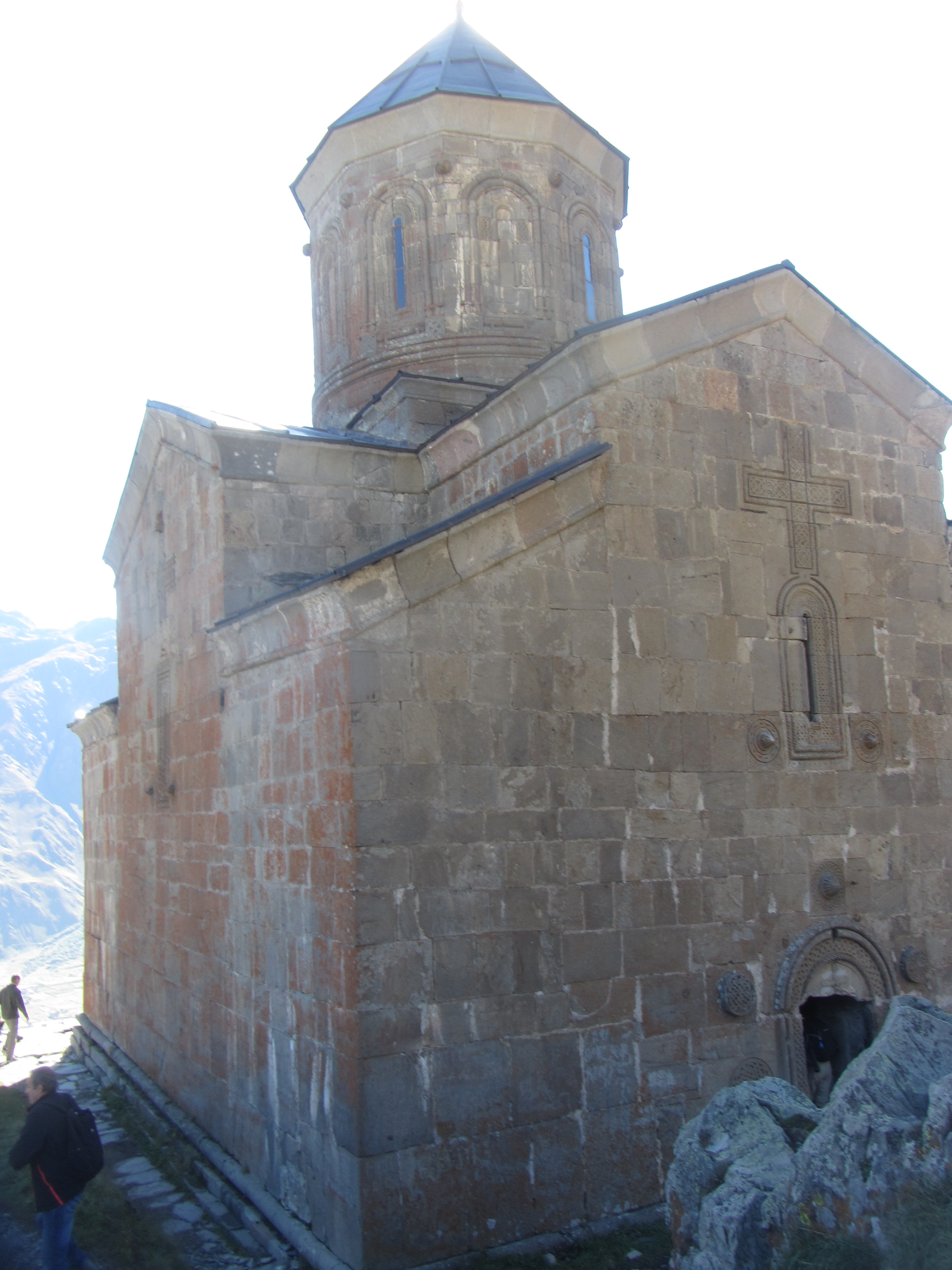
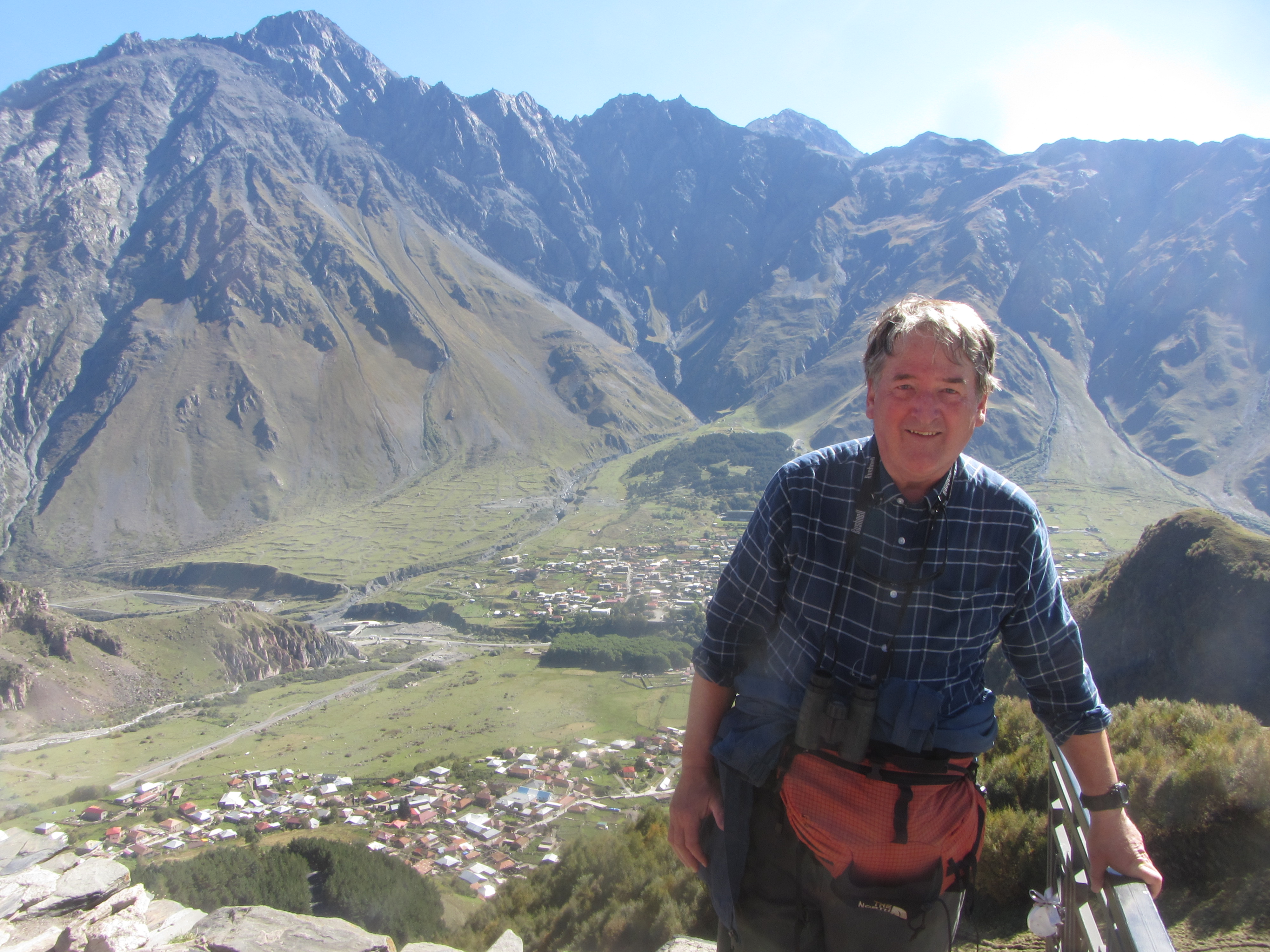
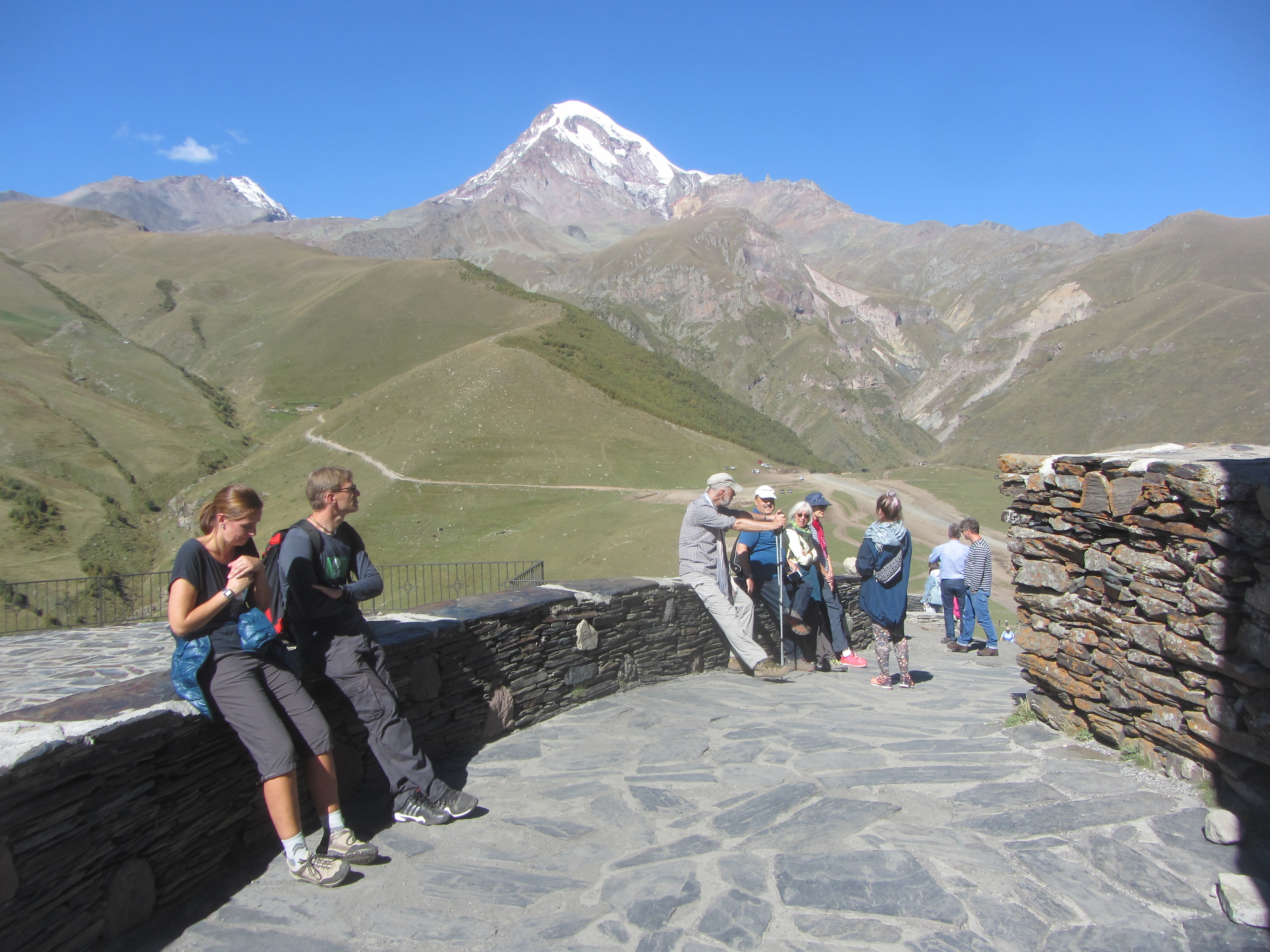
We were tired after our steep hike and happy to relax in the bus as
we headed back down the Georgia Military Road. We did stop
briefly to admire deposits from the mineral water gushing out of the
ground.
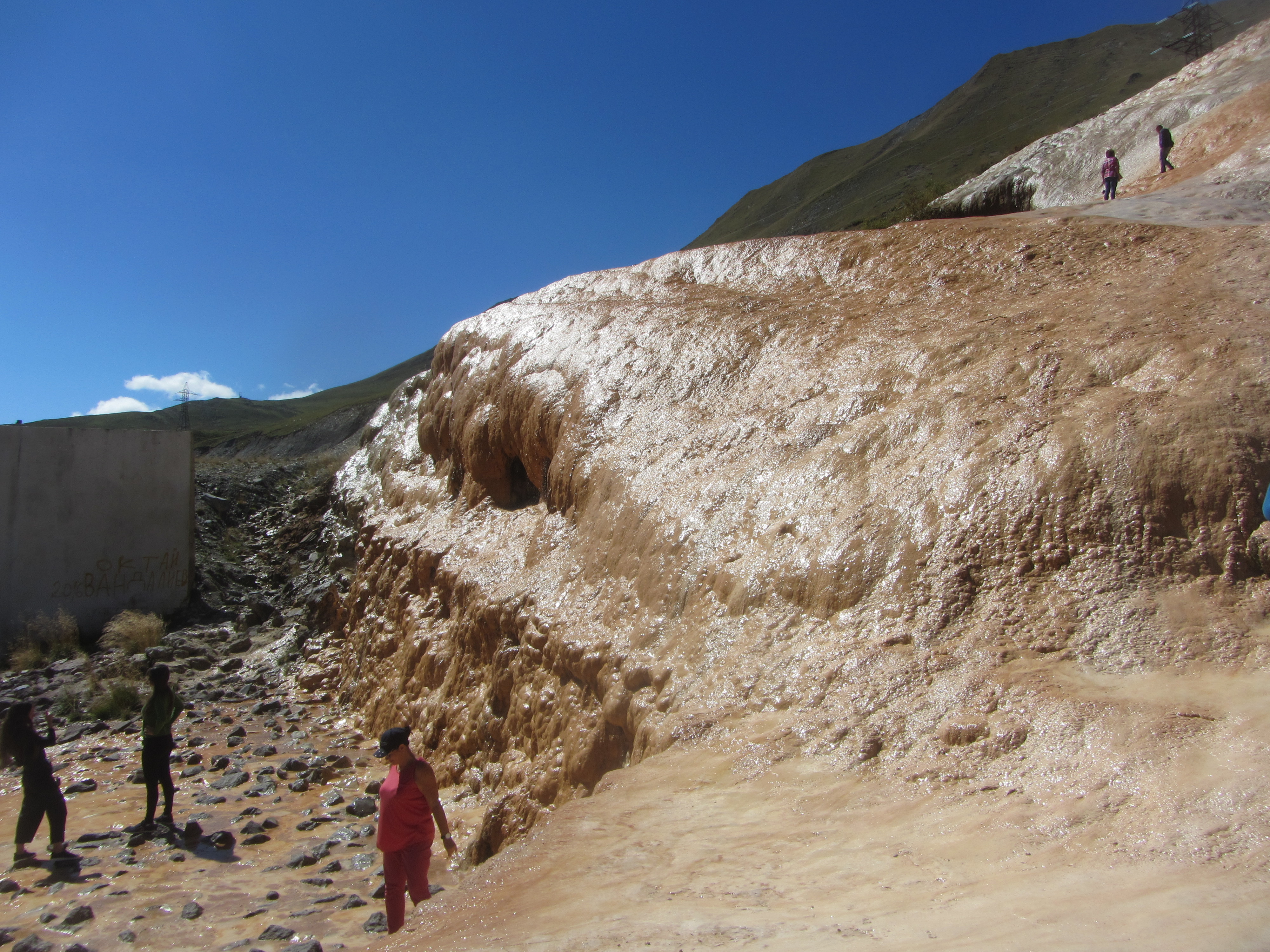
Next stop was Gori, Stalin's birthplace and location of an ancient
cave city. Click Here.
Back to Return to Georgia index click here
Return to overall travels index page click
here
